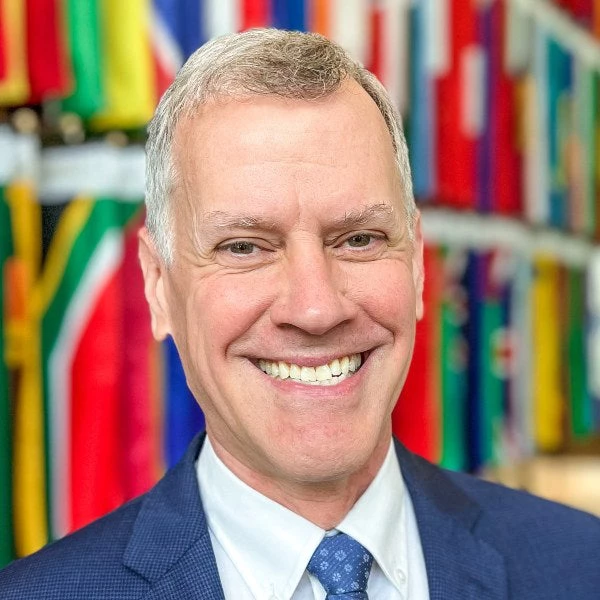 WDR 2028 Report Cover. | © World Bank
WDR 2028 Report Cover. | © World Bank
Six years ago, the World Bank released its groundbreaking World Development Report (WDR) dedicated entirely to education. Titled "Learning to Realize Education’s Promise," the report sounded an alarm about a global learning crisis. Despite high enrollment rates, students in most low- and middle-income countries were gaining insufficient knowledge and skills. In the following months, we—along with other colleagues on the WDR team—will reflect on the changes we’ve observed since the report's release.
This first post highlights how the WDR's key messages have resonated with policymakers, practitioners, and researchers.
The central message of the WDR was clear: the world was facing a global learning crisis.
In low- and middle-income countries (LICs and MICs), most children were failing to acquire foundational literacy and numeracy skills, let alone higher-order skills. Back in 2016, when we initially outlined the WDR, there was resistance to making the learning crisis the report’s core message. However, we believed that it was essential to prioritize this issue to drive change. Education without learning represents not just a wasted opportunity ; it is a grave injustice.
The report identified both immediate and deeper systemic causes for low learning. Immediate causes included children arriving at school unprepared due to poverty and lack of early childhood development, inadequately skilled and motivated teachers, inadequate learning resources, and poor school management. These issues were interconnected and had deep systemic roots, often driven by political economy forces that trapped countries in low-learning cycles.
The report proposed three policy actions to address the crisis:
- Assess learning: Improve measurement to make learning a serious goal.
- Act on evidence: Implement proven strategies to make schools effective.
- Align actors: Ensure the education system functions for learning by addressing political challenges.
The WDR wasn't the sole advocate for action on learning. It aligned with several other reports and initiatives, building on the momentum for addressing the learning crisis and the importance of a focus on learning more generally. We’ll discuss progress on these actions in our next blog post, but today, we want to highlight the WDR’s reach and how it has influenced the global policy dialogue. (A disclaimer: We were the co-directors of the WDR, so this is our own take on its impact.)
Here are three indicators of the WDR’s reach:
- Extensive Global Sharing: The WDR's dissemination was extensive, with presentations in nearly 60 countries, engaging education officials, NGO leaders, academics, employers, finance ministers, and even heads of state. These events facilitated discussions on how global patterns resonated with local experiences and strategies for improvement.
- Wide Readership: As of September 2023, the WDR had been downloaded over 1.1 million times, making it the second-most downloaded World Bank global report and the fifth-most downloaded World Bank report of any kind. It continues to be downloaded thousands of times each month.
- Scholarly Impact: The report has been cited over 1,000 times in scholarly research and reports, indicating its influence on academic discourse. It has also been included in the syllabi of dozens of leading universities—from Stanford University in the United States to Mahidol University in Thailand—underscoring its relevance in educational curricula.
Here are three indicators of how the WDR has shifted global conversations:
- Shaping Priorities: The concept of Learning-Adjusted Years of Schooling (LAYS), introduced in the WDR, became a critical indicator used in the World Bank's Human Capital Index (HCI). This alignment ensured that learning outcomes were part of high-level discussions at the country level.
- Influence on Partners: The WDR influenced the strategies of key partners such as the UK's Foreign, Commonwealth & Development Office (or Department for International Development (as it was then known) and U.S. Agency for International Development. It also played a role in shaping the Bill and Melinda Gates Foundation's global education program. Indeed, Bill Gates cited the WDR when he talked about the most important things he had learned in 2018.
- Increased Awareness: The term "learning crisis" gained prominence following the WDR's release. We didn’t coin the term, but after the WDR, we see a notable increase in its use in the media (as you can see in the figure below), as well as in books and journal articles. (The other jump in usage was in 2014, with the publication of Lant Pritchett’s book.) Using a common term may help to consolidate support for change.
These achievements were made possible by the dedicated WDR team, support from colleagues working on education across the World Bank, an esteemed advisory panel, and external support. However, while these developments are encouraging, they are just the beginning. The report has been widely recognized and cited, and the awareness of the learning crisis—further exacerbated by the COVID-19 pandemic—has grown. Yet the ultimate goal is to translate this awareness into concrete and long-term impact on education policies, programs, classrooms, and students' lives.



Join the Conversation